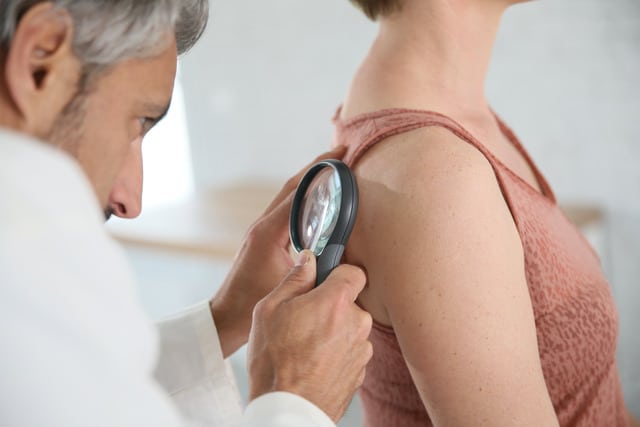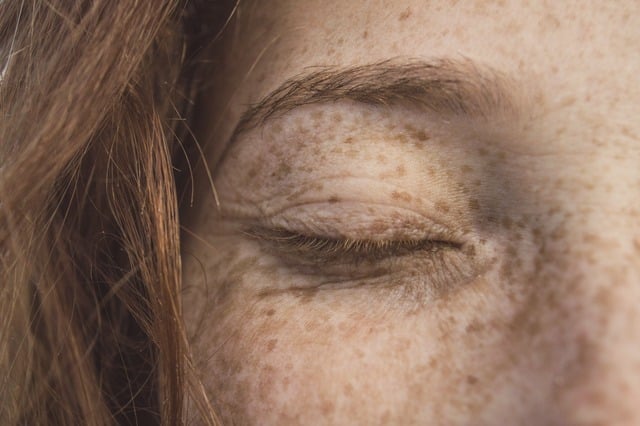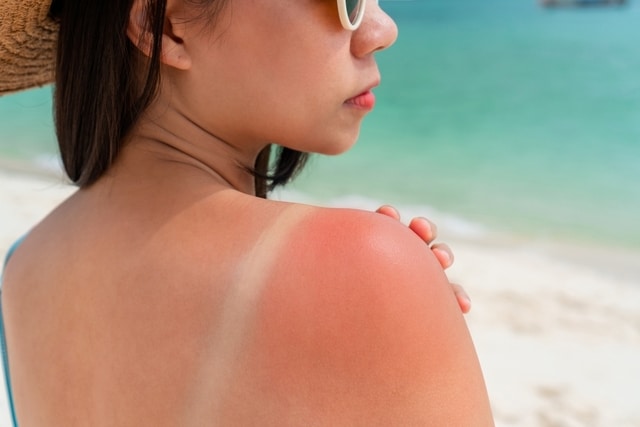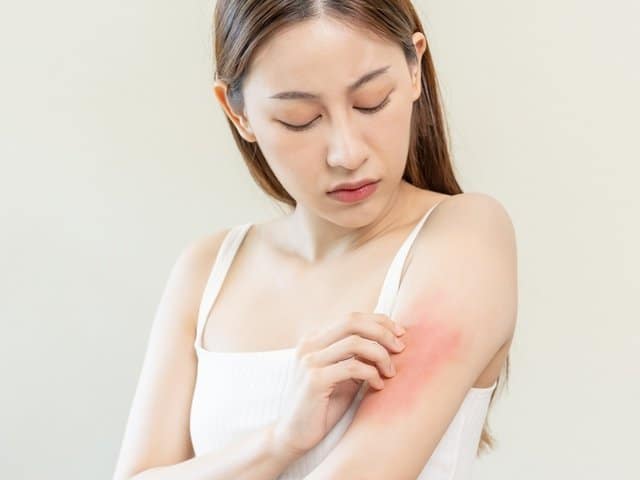What's New In Dermatology
What Happens When Squamous Cell Carcinoma Spreads?
Squamous cell carcinoma (SCC) is highly treatable and usually curable when detected early. However, without proper treatment, it can eventually spread to other parts of the body through a process called metastasis. What Is Metastatic Squamous Cell Carcinoma? Metastatic squamous cell carcinoma has spread to another part of the body. While not common, it is a […]
Healthy Skin Month: Skin Care After Skin Cancer
Estimates show that around 9,500 people are diagnosed with some form of skin cancer every day in the United States. Although this is one of the most common types of cancer, being diagnosed with skin cancer can have a negative impact on your life. After overcoming a diagnosis, many patients wonder what they can do to protect their skin […]
What Skin Cancer Has the Highest Recurrence Rate?
The unfortunate truth is that statistics show that at least 60 percent of people who have been diagnosed with some type of skin cancer will experience a recurrence within ten years. Although any type of skin cancer can return after a person has been given the “all clear,” there are some skin cancers that are more likely to do […]
Healthy Aging Month: Preventing Skin Cancer Recurrence
More than 9,500 people in the United States are diagnosed with some form of skin cancer every day. Around two people end up passing away every hour as a result of skin cancer. One of the best ways to provide yourself with the opportunity to beat skin cancer is by detecting it early. This makes taking steps to […]
Diagnosing And Treating Skin Cancer Of The Scalp
There are a few things that happen before diagnosing and treating skin cancer. First, you have to know there is something wrong. If you’re ever uncertain of a mole, dark spot, or blemish on any part of your body, never hesitate to schedule an appointment with a dermatologist to inspect or take a biopsy of the […]
Are Skin Cancer Screenings Covered By Insurance?
With summer making its presence known, the time to have some fun in the sun is here! From family cookouts to relaxing days on sandy beaches, it is the occasion to relax and soak in some sun rays! But with that fun, comes danger. The sun emits harmful UV rays that can cause skin damage […]
Do You Have These Top Skin Cancer Risk Factors?
The most important part of being cancer-aware and promoting your health is making sure you’re getting yourself screened appropriately. This is especially true for skin cancer, which is the fifth most common cancer. Prevention and early detection are the best defense we have against cancer at the moment because of the exponential progression of the […]
Photodynamic Therapy vs. Cryotherapy for Actinic Keratosis
There are many different treatment options when it comes to actinic keratosis. However, you may not know which one is right for you and your needs. You may have heard of photodynamic therapy (PDT) or cryotherapy for treating actinic keratosis, but what’s the difference between these two? Let’s take a closer look at what PDT […]
What Happens During a Skin Cancer Screening?
Getting regular skin cancer screenings is one of the simplest, quickest, and most effective ways to take control of your health. The board-certified dermatologists at Harris Dermatology have helped countless patients improve their outcomes with these routine appointments. While anything to do with cancer can feel daunting, screenings are nothing to fear. Here’s what you need to […]
So You Have Actinic Keratosis… Now What?
Actinic keratosis, also known as solar keratosis, is a common premalignant skin lesion primarily caused by excess UV exposure. These rough, scaly patches range from brown to tan to dark pink and typically appear on the face, lips, neck, ears, scalp, forearms, and hands. While many actinic keratoses are benign, they progress to squamous cell […]











